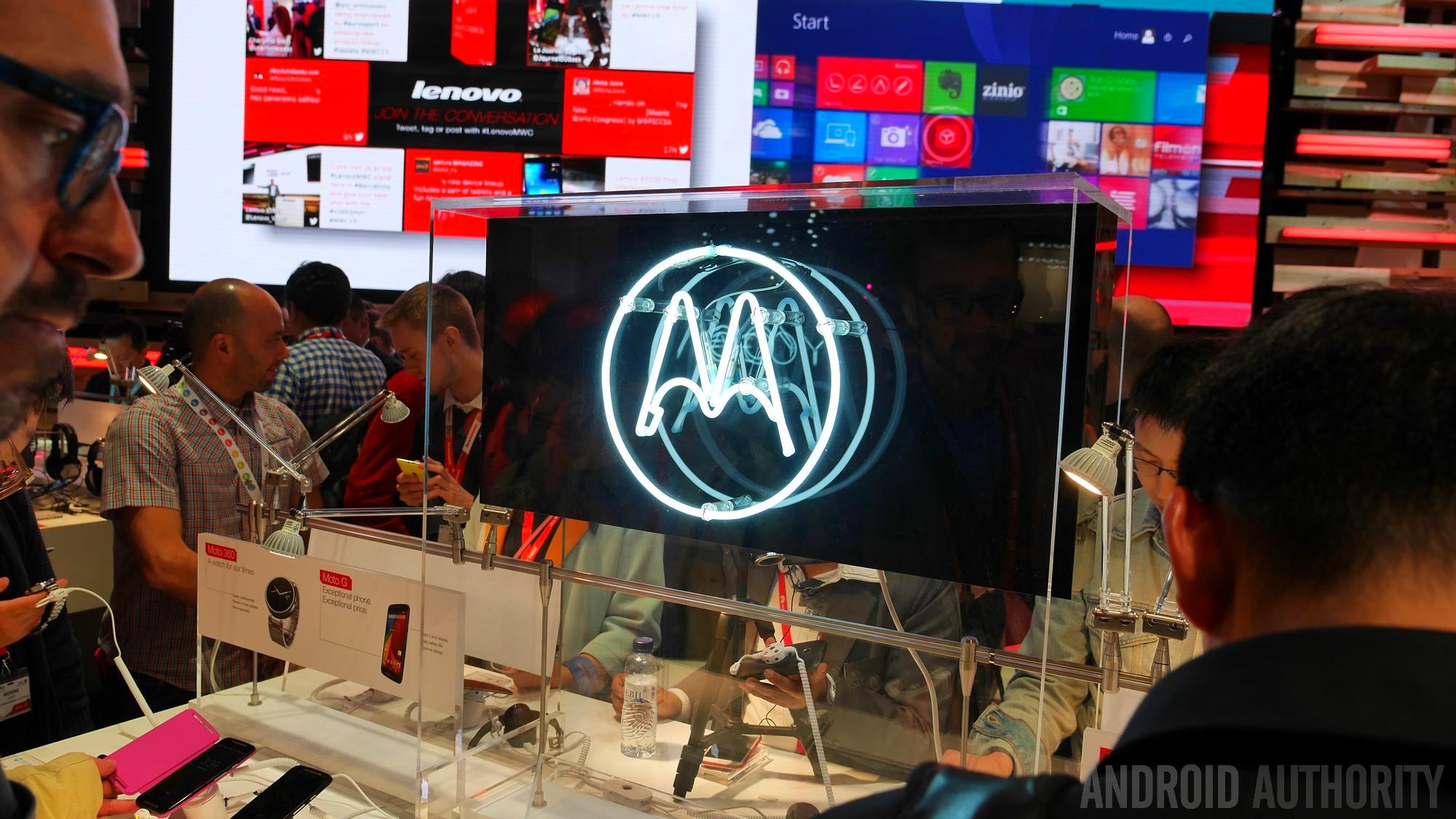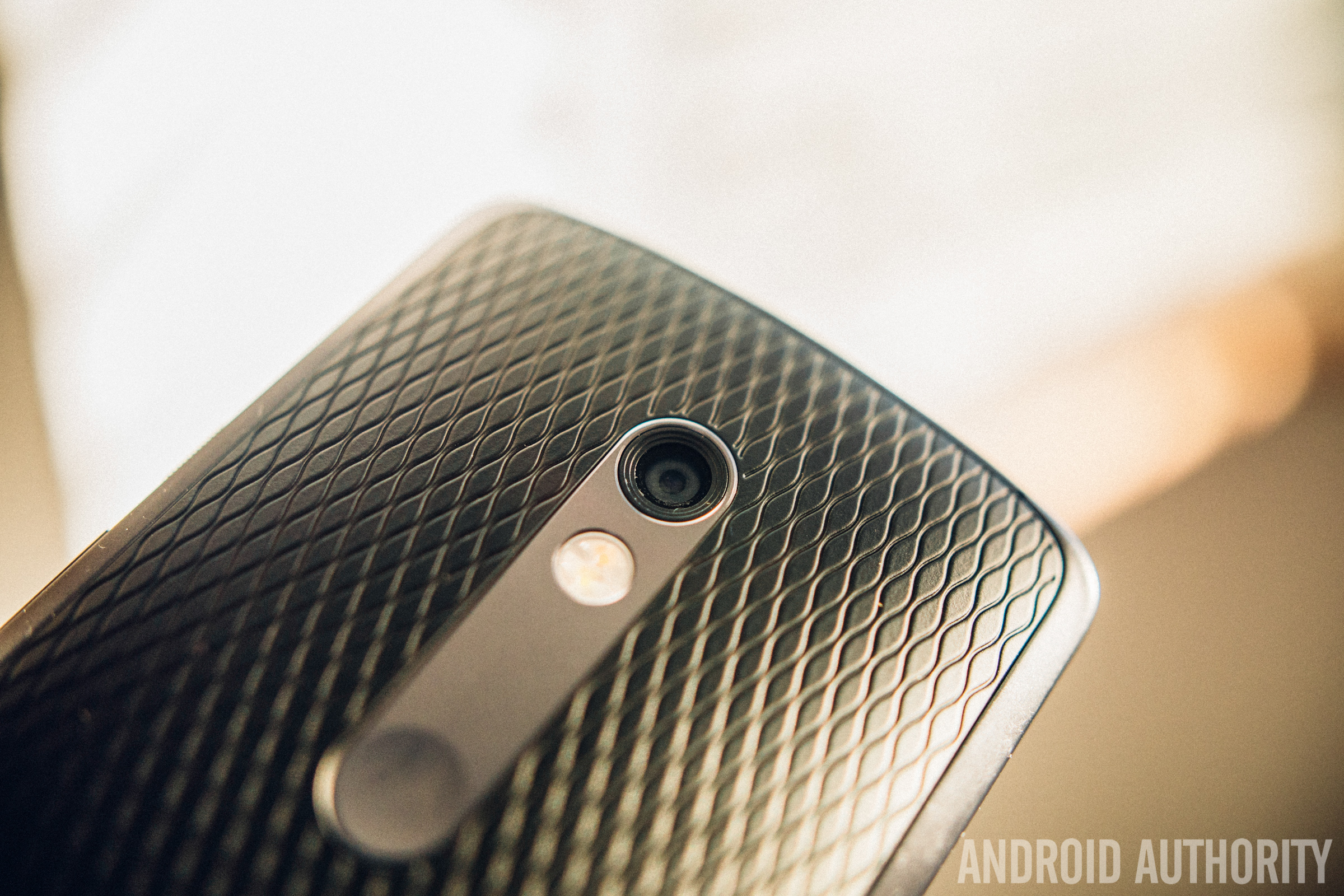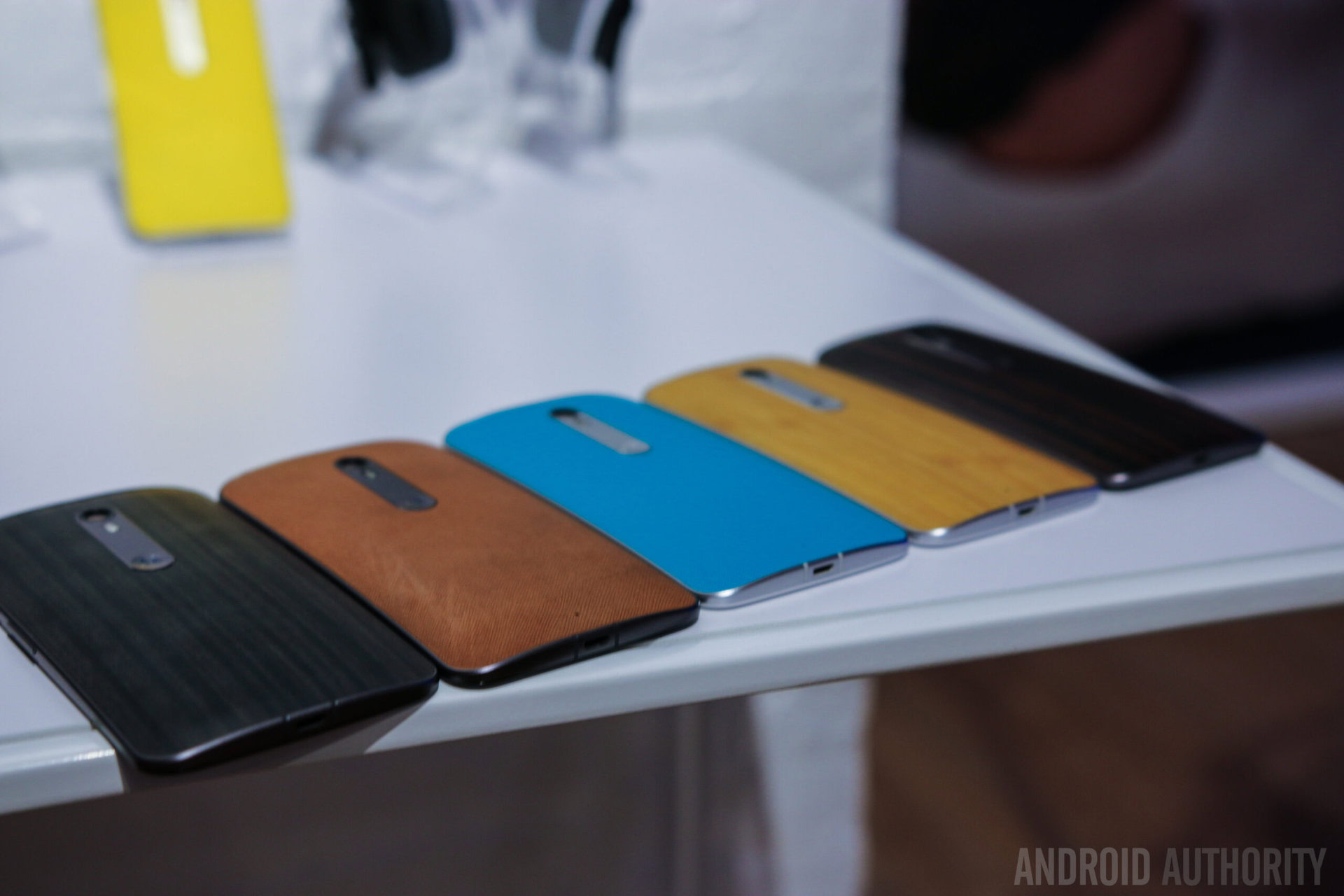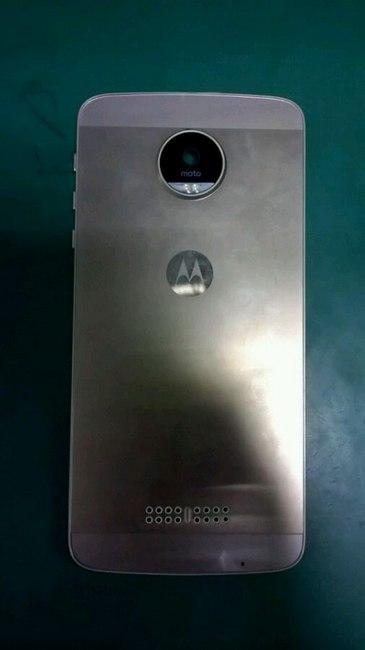Affiliate links on Android Authority may earn us a commission. Learn more.
Sound theory: How Motorola lost its groove (but still can improve)

Motorola is in a bit of a jam. Depending on one’s personal opinion, it may be of a very specific nature, or else a pervasive problem. Few fans would argue however, that something isn’t amiss. Perhaps the most troubling issue of all is that for a company doing so much right at one point, all of those achievements are seemingly being bogged down with bad decisions.

After Google purchased its Mobility segment, there was an immediate shift in direction for Motorola. Gone was the company’s obnoxiously named MOTOBLUR skin, which seemed to attract the ire of all who used it. Instead the company brought forth a build of Android that was remarkably similar to Google’s own “vanilla” Android yet with some powerful additions to make the experience unique, many of which have been praised over the years.
This was coupled by a brand new product line, the Moto X, which was at odds with industry trends. Instead of a large display and cutting edge hardware, the phone was a much more modest flagship. 2014 brought with it the Moto X (2nd Edition) which continued along the same path. Along with all this was Moto Maker. Then in 2015, things began to get all shook up.
The issue arguably began in earnest once Lenovo took control of the company following Google’s sale of it, however it is difficult to seemingly blame Lenovo for all that ails. In this piece we will look at each part of the puzzle and try to determine how Motorola can, in a sense, save itself from itself.
Update Debate
The first part of the problem is the update cycle issue. Regardless of anything else, one of the things that Moto X and Moto G owners want is fast updates to the latest and greatest Android builds. This was not an issue with the original model and its update to KitKat. Things got worse, however, when Android Lollipop launched, and Motorola took longer to make it available to the unlocked Moto X Pure Edition (2015), still long before its competitors had even released it on a single one of their devices.
The came last year’s Marshmallow Moto “mess”. Breaking with the past progress, updates to Android 6.0 were immediately met with delays. In fact, it would be an additional month before the core piece of hardware, the Moto X Style, would first see the new OS. Things were even less favorable for older hardware. Fans vented their frustrations on internet boards, Twitter, and many other venues while they watched as rival products were updated faster.
This situation doesn’t even touch upon the devices that Motorola has decided to skip entirely, thereby terminating their software development. Nor does it address the insurmountable delays associated with Verizon-branded Droid handsets. While carriers themselves are inherently bad with updates, there is something almost incomprehensible in the exclusive partnership between Verizon and Motorola and the overall inability to provide any semblance of timely updates to products like the Droid Turbo 2 which didn’t get Marshmallow until April. Shouldn’t these devices receive higher priority?
Multiple Models
The second part of the problem is Motorola’s “branching out” in terms of expanding its product line-up. While this is inherently not a bad idea, in and of itself, it is arguably leading not only to the first problem (see above) but also brand dilution.
The Moto X and Moto X (2nd Edition) were both the sole smartphones in their segment. Then last year, Motorola decided to release the Moto X Style, and the Moto X Play. While the former – known as the Pure Edition in the USA – is the real follow-up to the X-Line, the latter, the Play, is a perplexing product that really should have been given a proper letter of its own instead of piggybacking on the brand image of a vastly superior device.

The Moto X Play, after all, is essentially a mid-range phone, yet it’s not the mid-range Moto G, thus making it an upper-mid product. When compared with the X Style, it has a lower resolution display, a significantly slower SoC, less RAM, lower video recording abilities and no front-facing flash. It does have a larger battery, however.
Then as if that isn’t enough, a few months later it releases yet another Moto X variant, the Moto X Force, which was basically a Moto X Style but with a thicker body, ShatterShield display, and the “missing” AMOLED panel that the X Style by all intents should have had rather than the anemic LCD stuck in it.
Adding to that is the Moto G, which came in several different configurations. There was the standard 8GB of on-board storage and 1GB of RAM that was sold in stores and around the world. But then Motorola introduced a Moto G Turbo Edition which features 16GB of on-board storage and 2GB of RAM. It was available initially only in South America and then expanded gradually around the world.
Why weren’t both variants made available simultaneously? Why “punish” customers who picked up the original model, but would have spend the extra on the better of the two?
And then there’s the whole size issue, where each year Motorola keeps increasing the screen size of its devices yet randomly decides to remove the AMOLED panel from its premier Moto X and instead place it on yet another Moto X sub-variant, the Moto X Force (Droid Turbo 2).
Customer service crisis
The third part of the problem is the $5 million customer service-related lawsuit that has just been brought against Motorola. The issue involves the 1 year warranty included with every Moto device sold. As the case goes, however, the OEM seems to be having some difficulties actually honoring said warranty. The company’s rating on the Consumer Affairs website is just 1.1 stars out of five, and this doesn’t even begin to take into account complaints and rants on any number of Moto-oriented internet forums.

The $5 million class action lawsuit alleges that Motorola has violated their express warranty. This, in turn, means it has violated the Magnuson-Moss Warranty Act, that ensures businesses must make good on any warranties they issue. In addition, the court filings also state that Motorola makes getting customer service even more difficult by hiding away relevant contact information, and not making it clearly available. Lawyers for the plaintiffs state that the company is engaging in “unfair, unscrupulous, immoral, and oppressive” business tactics.
Getting repairs done in a timely manner causes problems for customers however even ordering from the Moto website itself can be met with issues. Speaking from personal experience, when the Motorola-made Nexus 6 released back in 2014 and an order was placed in early December [2014] and then a cancellation request was made just hours later, the company refused to do it. The explanation? The device was already in the order fulfillment process and thus would need to arrive formally, after which Motorola would need to be contacted again to obtain an RMA required to return it. Yet nothing was mentioned of the fact that, at that point given the supply issues, the order wasn’t estimated to ship for three weeks.
A “lost” Lenovo
The fourth part of the problem is literally Lenovo, namely what the Chinese OEM wants to do with its new subsidiary. Early 2016 was hit with several reports about changes in the works for Motorola. Lenovo’s ownership of Motorola has become a quagmire of misunderstandings and clarifications. It began when an announcement was made at CES on January 7th, that the Motorola brand would be discontinued.
As is often the case with the internet and sound bytes, this news was quickly misconstrued – partially by misleading headlines and partially by a lack of information – and misinterpreted to mean that “Lenovo is doing away with Motorola phones”. This prompted a formal post on Motorola’s own blog to clarify the issue the next day. The result: the Moto brand and even “batwing” logo will stay, but be relegated specifically to higher-end devices while the Lenovo Vibe brand will be used for lower-end products.
It was also revealed near the start of this year that between the Vibe and Moto brands, there would be no more than 15 new products hitting stores in 2016.
At the end of January, things went even more cray cray as Lenovo’s SVP, Chen Xudong made major news when he stated the following in an interview:
- All Moto-branded devices to launch in 2016 will come with embedded fingerprint sensors.
- All Moto-branded products to launch in 2016 will have screen sizes of 5 inches, or larger.
- Moto-branded products will see their design fine-tuned to suit the needs of customers in both the East and West.
- Lenovo and Moto’s UI will be merged into a brand new UI to be unveiled in 2017.
Shortly after the post went up, it prompted Motorola to contact Android Authority directly with the statement that “Xudong was referring to products specific to the China market” meaning the four points listed directly above – which made headlines across the internet – had nothing to do with any market other than that of China.
All this before January 14th, 2016 no less. Impressively the company has basically managed to stay out of harms way since then by basically not saying anything.
Design in mind
The fifth and final problem is that which is seemingly going to be hitting the headlines in the next few weeks, namely whatever device(s) Motorola plans to unveil in India. While new is good, and the company can certainly put out some good hardware and software, the internet’s reaction to what has been leaked so far has been less than favorable:

This above image is believed to be a press render for the upcoming – yet to be announced – Moto G (4th Edition). While some see a sleek, beautiful device that looks like a fine upgrade to the G-line, comments have been forthcoming about people’s reaction to the front-facing fingerprint sensor. Given the fact that there is a Moto dimple on the back of the device, it seemingly makes little sense for it not to be used. Some have also complained about the overall design of the phone itself.
Then there is what is believed to be the Moto X (4th Edition):

This picture appeared last December and was – naturally – floated around the internet. Some praised the metal design, but much was made about the lack of a dimple where the Moto logo is, the lack of a fingerprint sensor that would be in said dimple, the protruding camera module, and the overall design of the phone which many felt copies the iPhone 5/5S/SE.
To be fair, Motorola hasn’t announced anything yet, and thus all of the stories and leaks and rumors are so much hearsay at this point. Still, assuming that some – or all – of them pan out, the fact that there is so much negativity already in the air does not exactly bode well.
Solving the situation
In terms of a solution, it depends on the issue itself. For some, the points raised in this piece may be all irrelevant. Motorola has consistently delivered good hardware design and performance, and coupled with its Android tweaks and impressive Moto Maker customization, has carved out a nice niche for itself. Those who complain about OS updates are a vocal minority, much as how the average consumer seemingly could care less about the product names and branding, or the lawsuits filed by other people for issues they don’t have. Assuming they even know about any of this period.
For those who do feel a problem is at hand – be it one single one or a multitude of maladies – the task at hand is that much more massive. The company clearly needs to get its head around what its brand is, what kind of products it wants to make, and what kind of commitment it can realistically make to customers. Ironically speaking, the more successful Motorola – the brand – becomes in the future, the more these issues will become that much greater, as the number of users thereby increases.
It’s also worth pointing out that no “solution” may be necessary at all, as no real problem exists save for among the more vocal crowd who feel strongly about the points expressed in this piece. The general public doesn’t care about Android OS updates, for example. While too much choice can be confusing, Motorola has far less products in its portfolio than say, Samsung or HUAWEI; consumers are not being inundated with too many products, and even Samsung itself has multiple variants of a single product name (see, for example the Galaxy S5, the Galaxy S5 Active, and the Galaxy S5 Mini).
As for the perceived issues with the designs of the 2016 phones? Assuming the leaks are all true, the real test of success will be to what degree the products find theirs. Sure there are people bashing the purported leaks of the Moto G (4th Edition) because of the fingerprint sensor being flanked by seeming nothing, but HTCdid this with the One A9 last year. And while it might very well be better placed in the dimple located on the back side, maybe market testing has came up with evidence to support the front is preferred.
Even with respect to the lawsuit, while the issue at hand is a serious one that requires immediate attention and assurance these kinds of problems will not be allowed to continue, $5 million is mere pocket change for gigantic corporations like Lenovo, if it’s even worth considering at all. The real threat is the brand image damage that could result from the suit, and associated press coverage, which could be quite damaging indeed. But this can be easily solved with a positive PR campaign that acknowledges mistakes and vows to make amends.

Wrap Up
To be fair. some of the problems Motorola is experiencing right now are issues that can be expected due to its being acquired. Lenovo is a massive establishment, and a foreign one at that, and one that also has its own smartphone brands and plans. As with any merger or acquisition, there will always be an adjustment period after which a more stable solution is selected. For this reason, issues such as the fourth and fifth discussion points may not be as important as one might initially assume.
Still, the overall problem of the brand strategy, and potential dilution of it, must be addressed. Given that Lenovo has managed to save IBM’s ThinkPad business and has since acquired many other things and done great with them too, it’s likely that Motorola will continue to succeed in the future.
On the other hand, as for if the company will ever get back the groove it had during the years of 2013, 2014, and part of 2015, that is another story entirely, a song that has yet to be written. What do you think, like Lenovo’s current direction or not? Share your thoughts in the comments.